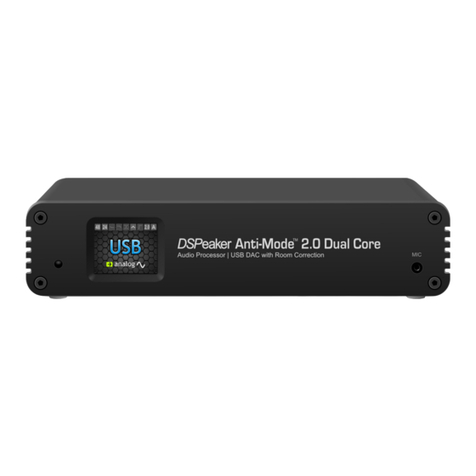ANTI-M DE 2.0 DUALCRE
OWNER'S MANUAL
Table of Contents
1.Introduction......................................................................................................4
1.1 What's included in the box..................................................................................4
2.Overview..........................................................................................................5
2.1 Front Panel........................................................................................................... 5
2.2 Rear Panel........................................................................................................... 5
2.3 Gettin Started.................................................................................................... 6
2.4 Typical Room Calibration..................................................................................... 7
3.Home Screen..................................................................................................10
4.Settin s Menu.................................................................................................11
4.1 House Curve Tool..............................................................................................12
4.2 Tilt Curve Tool................................................................................................... 13
4.3 Infrasonic Filter................................................................................................. 14
4.4 Hi h/Lowpass filters.......................................................................................... 15
4.5 Custom Parametric Equalizers..........................................................................15
4.6 Di ital Headroom (Advanced)...........................................................................18
4.7 Audio Settin s.................................................................................................. 18
4.8 Lan ua e Selection..........................................................................................19
4.9 Factory Reset.................................................................................................... 19
4.10 Information..................................................................................................... 19
4.11 PC Link............................................................................................................ 19
5.Usin Sound Profiles.......................................................................................20
6.Advanced Calibration......................................................................................21
7.Multi-point (Wide Area) Calibration.................................................................22
8.Measurements................................................................................................23
9.Audio Connections..........................................................................................24
10.Troubleshootin ............................................................................................25
11.Technical Specifications................................................................................28
11.1 Interfaces........................................................................................................ 28
11.2 Analo Specifications......................................................................................28
11.3 Firmware Specifications...................................................................................28
12.Contact.........................................................................................................28
Rev. 0.93 2012-06-08 Pa e 3 (28)




























